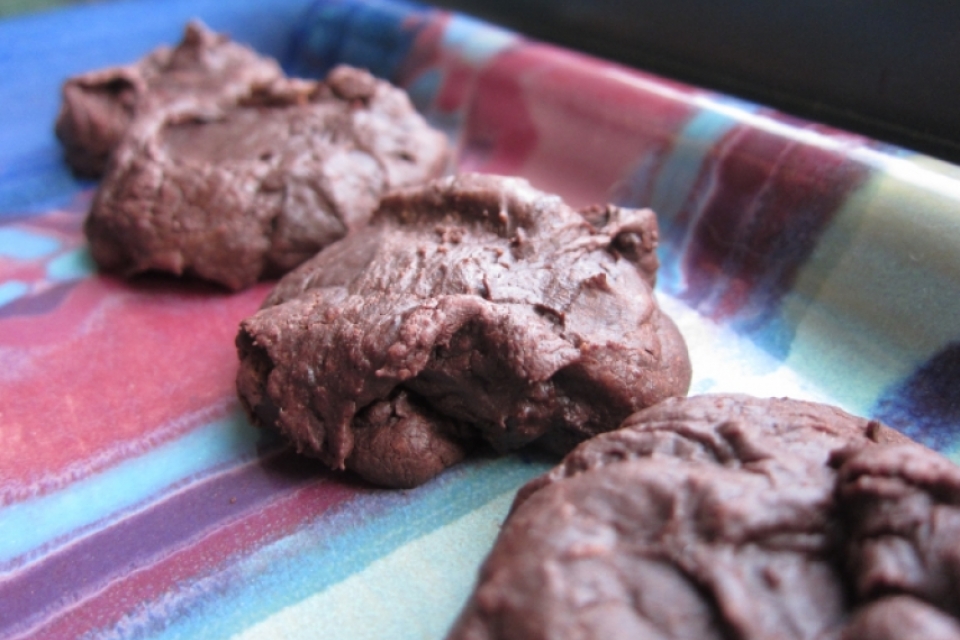Fat is Flavor
The weekend of February 17th marked the 36th Annual NOFA-VT Winter Conference! There was an abundance of inspirational, innovative, speakers, workshops and activities throughout the weekend, not to mention a delicious lunch both days with highlights from a variety of Vermont farms. During lunch on Saturday, we heard from a number of state legislators and representatives including Senator Bernie Sanders, Congressman Welch and Governor Scott. Each speaker stated their support of the incredible work being done by folks involved in the Vermont food system, many of whom were NOFA attendees. Throughout the weekend there were workshops that ranged from Farm Finances, No Till Production and Techniques, to Making Herbal Medicines.
One workshop I found particularly interesting was titled Animal Fats: Rendering & Cooking. The workshop was led by Andrea Chesman, author of Serving up the Harvest and Recipes from the Root Cellar among many other cookbooks. Andrea lives in Ripton, Vermont where she is currently writing a cookbook on rendering and cooking with animal fats. I am not a vegetarian, but I don’t have a lot of experience cooking with animal fats. Going into the workshop, I remembered a saying from a former professor (who happens to be a professional chef), “fat is flavor”. She was quoting her biggest role model, Julia Child, who is known for her saying, “Fat gives things flavor” along with the generous servings of butter she would use while cooking. Either way, I had no idea what to expect as I walked in and took my seat in the workshop.
To begin, Andrea cleared up some myths about animal fats:
- Eating animal fats makes us fat
- All animal fats are saturated fats and all plant fats are unsaturated
- Eating saturated fats causes heart disease
- Polyunsaturated fats, such as corn oil, is a heathier food choice than lard
As someone with a background in nutrition and food science, I continuously try to minimize the amount of fat I cook with without sacrificing the flavor of the dish, but hearing that there might be an option that could satisfy both values, I was immediately intrigued.
She then dove into some of the history about cooking fats. One of the most interesting pieces of information Andrea shared was that Crisco, vegetable cooking oil, was invented because the multi-national company Procter and Gamble had an excess of cottonseed oil from soap manufactures, so they created a cooking fat. What! Soap à Cooking oil?
After a little history, Andrea passed out some popcorn that had been cooked in duck fat from Flatlander Farm. It was delicious!! I couldn’t believe the depth of flavor that a small handful of popcorn held, it was salty, crunchy and incredibly rich. Yes, I am still talking about popcorn.
She then provided an introduction on how to render fat. She broke down the process into four steps:
- Chop, cut, grind, or grate the fat.
- Melt over low heat. Start off with a little water to prevent scorching. This will evaporate.
- Strain.
- Refrigerate or freeze.
Once you have rendered your fat, you are ready to cook! Andrea gave a list of the many ways you can cook with animal fats. Here are her ideas:
- Deep-frying
- Sautéing and stir-frying
- Roasting
- Pie dough and other baked goods
- Confit, or slow cooking in fats
Then, we were each treated to a chocolate chip cookie, which Andrea had made with some beef lard she rendered. Again, the cookie was delectable. I was surprised by the fact that you couldn’t taste any sort of beef flavor in the cookie at all. It was scrumptious and melted in your mouth, just like the popcorn.
Andrea ended the workshop with a number of tips and tricks for substituting animal fat into recipes and becoming comfortable cooking with animal fat.
Tip 1: Add Moisture: Butter is 15% water, so add a few tablespoons water to low-moisture doughs, such as cookies and biscuits.
Tip 2: Don’t Judge by color: Animal fats do not brown as well as butter. Tops of cookies should appear set and dry.
Tip 3: Add salt: Baked goods will taste a little flat, especially when made with all lard or all tallow. Extra salt will compensate.
Tip 4: Use three-quarters as much fat. Each animal fat has a different consistency, flavor and melting point which means that each product will affect your dish differently. If a recipe calls for 10 tablespoons of butter use 7.5 tablespoons of animal fat. But try it out one way and see what works and doesn’t work for each individual recipe.
Tip 5: Go Half and Half: Replace only ½ the butter with an animal fat.
Andrea assured us her cookbook containing mouthwatering recipes and more in depth information on rendering and cooking with animal fats would be coming out soon and that she was hoping to sell copies at the NOFA conference next year!
Where can I buy animal fat in Vermont?
The best advice that Andrea gave was to talk to your local butcher or farmer and see what they are doing with any leftover animal fat. If they have extra, take it! We also sell a few products in our store.
- Local pork leaf lard and back fat from Sugar Mountain Farm in West Topsham Vermont.
- Local beef suet which is raw beef fat from LaPlatte River Angus Farm located in Shelburne. Use the instructions above to render the suet, afterwards use in any pie crust, cookies or cakes!
- We also carry duck fat in our Meat and Seafood department.
The most important thing to remember is to not be intimidated by animal fat and just have fun with it! Who knows, you might discover the chocolate chip cookies you make are even better than your grandma’s!
“With enough butter, anything is good.” Julia Child
